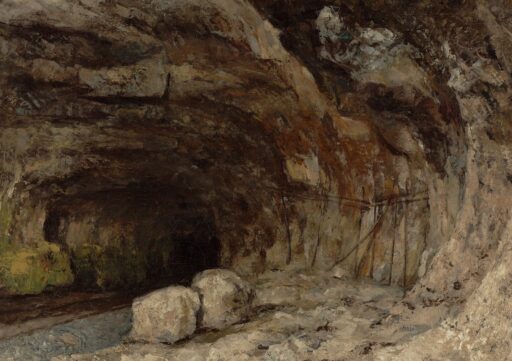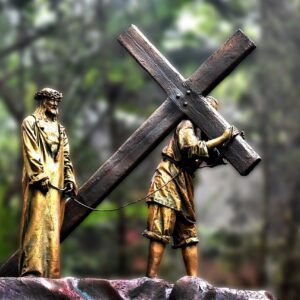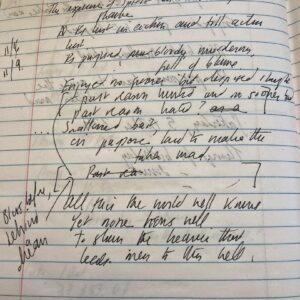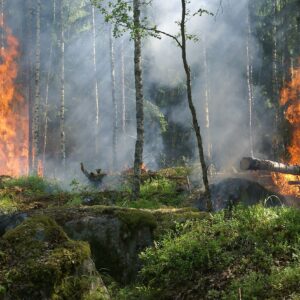I’ve just had a poem produced by, then canceled by, ongoing scholarship. Perhaps. We’ll see what happens next. I wrote “Cathedral” this year in response to a television documentary produced, in part, by The National Geographic Society that told the story of a remarkable discovery: a human burial found deep in a cave that involved tools and symbolic markings 300,000 years before such cultural features were thought to have emerged. There were pictures—scratches like hashtags marking a deep passage, an oval pit shaped like a womb, the bones of a hand, a napped scraper among them. The archaeologists expressed wonder, skepticism, apparent professionalism, and I seemed to witness human history under revision. For my poem, I provided an orienting headnote.
Recent research in South Africa’s Rising Star Cave system suggests that homo naledi, a long-extinct relative of modern humans, may have buried and mourned their dead and marked these burials with symbols etched into the cave walls 300,000 years ago, long before homo sapiens did so.
I was moved to write by the story’s implication that our planet had given rise to deeply human and metaphysical contemplations not once, but at least twice, and that our human kinship affections and philosophical-religious feelings are innate on Earth. I wrote the poem in a rush the next day, revising only lightly.
Cathedral
Distant father, mother—you could not bear that dogs or birds might scavenge her bones, so you dared the cave, by torchlight descended its steep path, dragged yourselves and her body carefully wrapped for the long descent. In a high-ceilinged room you dug with your hands an oval pit, placed her body in it, as if in a womb, and in her hand tucked a sharp scraper, its edge napped fine for the next world. You wrapped her fingers around that tool so she, too, could dig with it, could dig herself out when daylight returned to her wide brown eyes. You covered her, then sat for a while and tended the fire that lit the heights of ascending stone—natural arch and buttress—our first cathedral.
Fortunately, I had the good sense to cool my jets. I set the poem aside to steep for a while before sending it out for publication. And now I think it’s a dead letter. Yesterday my scholarly wife—she has an advanced degree in Classical Art and Archeology—discovered a devastating critique of the homo naledi papers that correspond with the documentary I had seen. It seems the cave-wall etchings may be, in fact, a kind of “elephant skin” stone with natural patterning that resembles incised marks. And there’s a problem with the oval pit. The illusion of a dug grave may have been produced when bone matter leached into soil to alter the dirt’s chemistry so it seemed to have been removed and replaced. What appeared to be a tool is so lightly worked it may not have been a tool, at all. No evidence of charcoal was found to suggest torches or fires. The provenance of the scraper is in doubt, too. And the bone fragments found do not suggest coherent skeletal remains. But how did the bones get there, so deep within the cave? The Earth is almost inconceivably old and has shrugged and shifted many times. Sedimentation over millennia can produce illusions if you long to see them.
So my poem is toast, a fantasy of kinship based upon insufficiently processed field reports. I’m disappointed, of course. I was rather fond of the poem. But I’m fonder still of the idea that Earth so wants to be known by creatures that can respond to it with feeling and wonder that it has repeatedly labored to produce knowers. And so it has—at least once—in us. And who is to say that the deer who wander our yard, devastating the hydrangeas, do not add to the way the world is known? Of course they do, by taste and by terror as we set our little dog upon the creatures that have turned our gardens into their salad bar. And what of the leaf respiring in sunshine? Does its “knowing” count only when I know it?
In truth, the mere existence of sentient life on our planet always has been enough to sustain my wonderment. But now, over our morning coffee, scholarly Sally has brought to my attention yet more recent discoveries in the field of paleontology. Though enquiries are in their early stages, there appears to be evidence that Earth’s evolutions may have given rise to as many as two dozen distinct homo species. Across the epochs, all but ours rose and fell. And our own line, homo sapiens, shared the planet with other early humans. “Imagine grazing and hunting around and encountering another human, but different!” Sally exclaimed when she reported the news. “It seems that the Ice Age thinned the herd,” she added.
“So what were our advantages?” I asked.
“We were social, so we could organize a hunt,” she replied. “We had those two things going for us. And we could eat a lot of different things. Our brain wasn’t the biggest—Neanderthal’s had been bigger—but its most important part, the frontal cortex, is large and well-wired.”
“Sociability and killing,” I mused. “So we form working groups and fight wars. Sounds about right.”
“Yeah, like the Greeks. They made the polis and philosophy and science, then fought with the other towns.”
Our survival as a species, it seems, may be founded on two special skills in conflict with each other. Crucially, we can get along, but we’re natural born killers. I went quiet at the thought, then picked up my phone. I’d been using it to read about the new cosmology and the deep space probes and pictures that suggest there may be many, many “Goldilocks” planets circling their suns at just the right distance to be not too hot and not too cold. Scientists want scans of their chemistry to see whether “the building blocks of life” may be found there, too.
Maybe we’re not miraculous. Maybe we’re common. And our purpose is to know. To know and to say. Even, perhaps, to make poems. If we can just keep from killing one another.
Might poetry help? It is, after all, that very specialized use of language that endeavors to connect us, inside to inside. My own engagement with the art over the past fifty years may or may not be typical, but it has been fueled continually by an effort to achieve what I think of as a “primordial” quality of language, a seeming transparency in which a reader might experience, along with the writer, what Emerson called an “original relation” with things.
I knew Ezra Pound had gone tragically wrong when he embraced Mussolini’s fascism, but his earlier “Imagism” had inspired me, and his critical essays led me to Ernest Fenollosa’s “The Chinese Character as a Medium for Poetry,” which described a kind of “fossil poetry” that sought to present something close to our pre-linguistic encounters in the realm of the senses. As examples, Pound provided haiku-like poems in which the “super-positioning” of images renders moments in which a mind found revelatory homologies. He thought significant a moment when, walking with a Japanese naval officer, his friend stopped. “I am making a poem,” he said, then composed a haiku comparing cat tracks in the snow with plum blossoms.
In a similar mode, William Carlos Williams provided chilled plums and a vivid red wheelbarrow. Crucially, these were not mere pictures. In Williams, a speaker’s voice—“So much depends upon” and “I must tell you”—implied molecular human dramas. His wife had planned a dessert of plums, but he ate them, and the poem was his confession and apology.
The first part of the twentieth century showed me a moment in which poetry sought to render atoms of experience—in which poetry tried, paradoxically, to express the pre-linguistic. And it sought to do so by connecting writer and reader in a moment of shared sense experience. This seemed to me, when I began writing, to be the most fundamental work—and value—of literature: to carry us out of ourselves and into another’s world.
I suppose that’s why I was so taken by the notion that, millennia ago, distant ancestors had incised a cave wall with marks to say: Go this way. We were here before you. There’s something important farther down.
Robert Schultz has authored seven books in three genres and is an exhibiting artist. He has received national awards for his poetry and art and has spoken at the National Gallery of Art, Oxford University, and the U.S. Library of Congress. His artwork is held by museums and private collectors in the U.S. and abroad. His most recent book of poetry is Into the New World (Slant, 2020).





